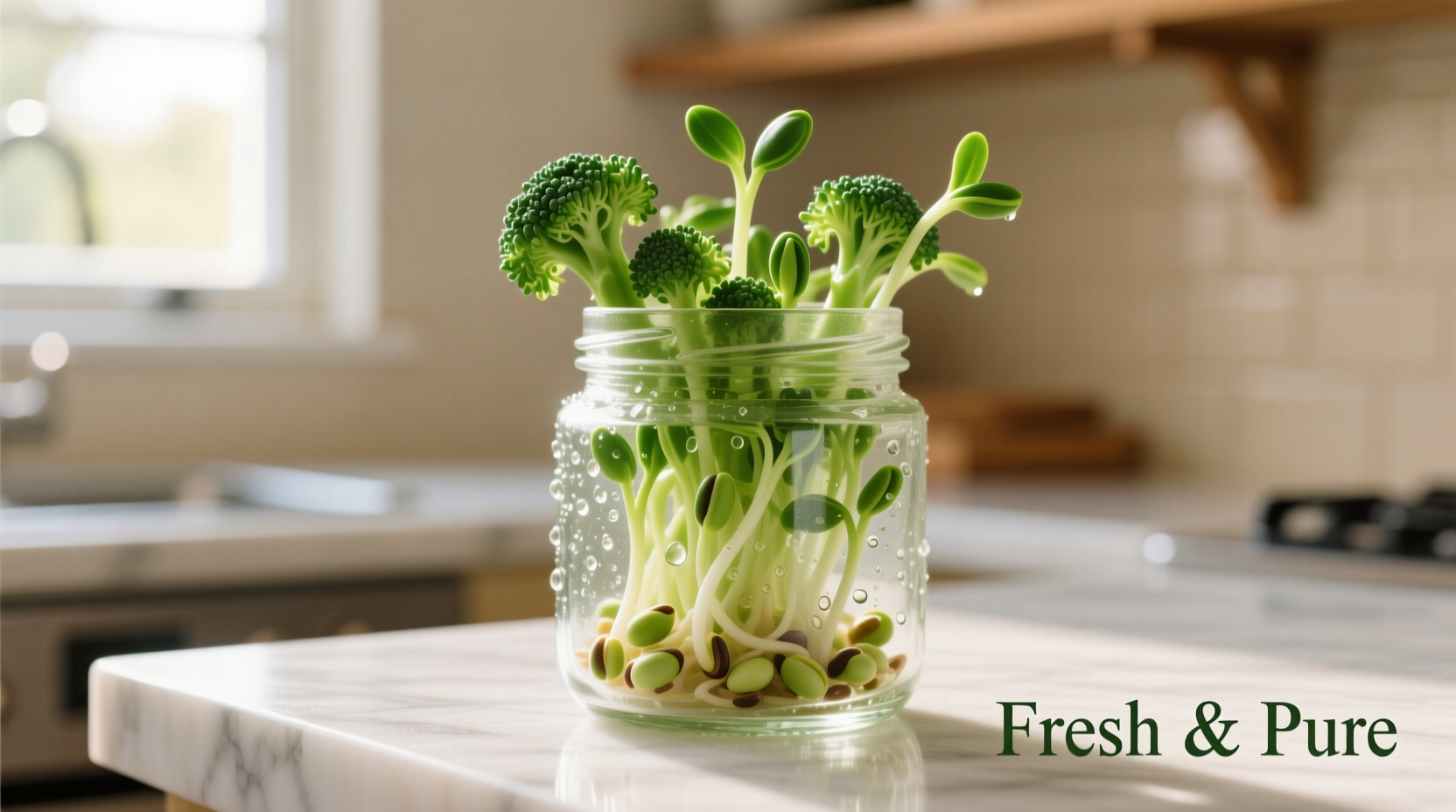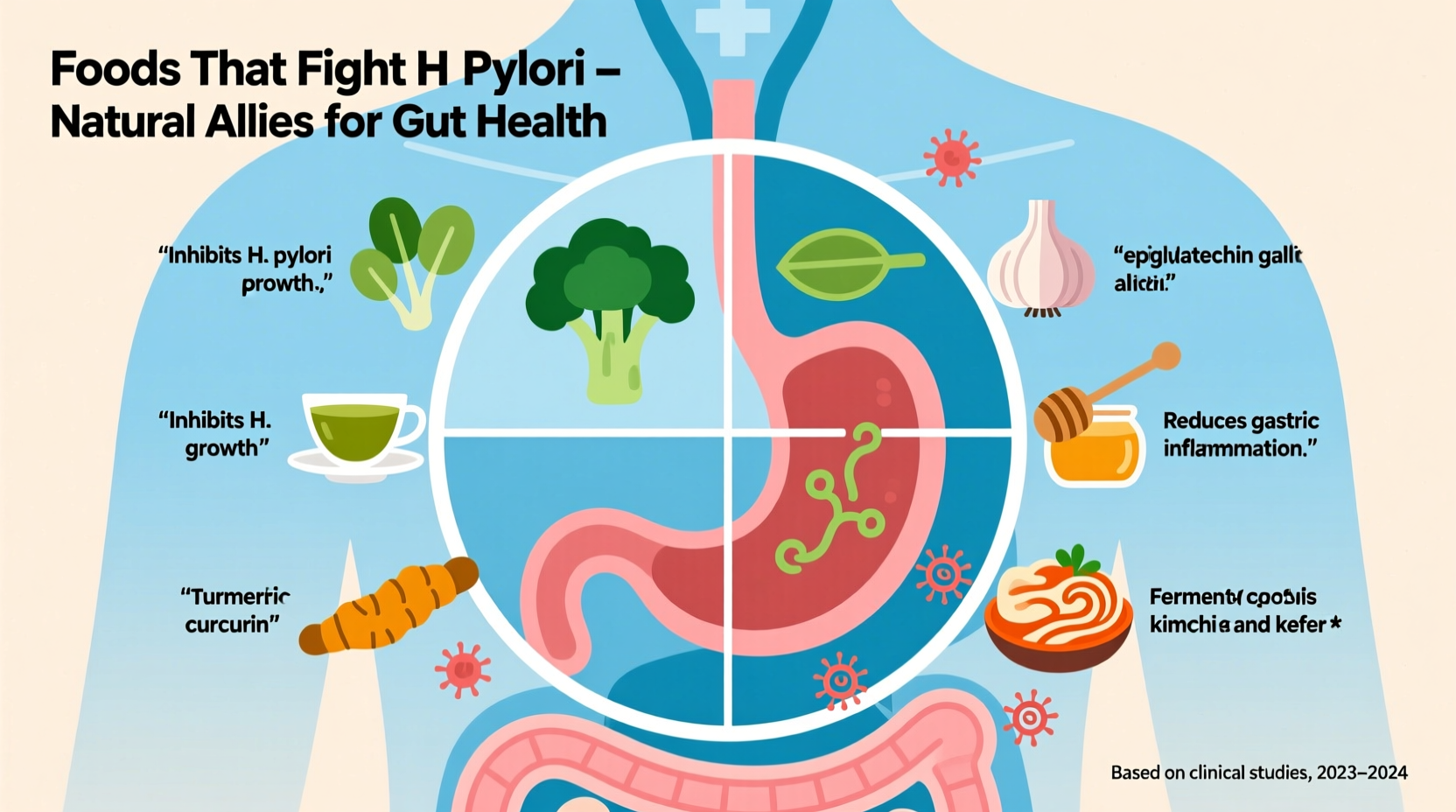No single food can completely eliminate H. pylori on its own, but research shows certain foods may help reduce bacterial load and support conventional medical treatment. Broccoli sprouts, green tea, specific probiotics, and Manuka honey demonstrate the strongest scientific evidence for potentially inhibiting H. pylori growth when used alongside prescribed antibiotic therapy.
Helicobacter pylori (H. pylori) infection affects over half the world's population and can lead to stomach ulcers, gastritis, and increased cancer risk if left untreated. While antibiotic therapy remains the gold standard treatment, emerging research suggests certain dietary components may enhance treatment effectiveness and reduce bacterial colonization. Understanding which foods show promise—and their realistic limitations—is crucial for anyone managing this common infection.
Why Diet Matters in H. pylori Management
H. pylori bacteria have evolved to survive in the harsh acidic environment of the stomach, making them difficult to eradicate. Standard triple therapy (two antibiotics plus a proton pump inhibitor) achieves eradication rates of 70-90% but faces challenges with antibiotic resistance and side effects. This is where dietary approaches may provide complementary benefits:
- Dietary compounds can inhibit bacterial growth through multiple mechanisms
- Some foods reduce inflammation caused by the infection
- Natural compounds may enhance antibiotic effectiveness
- Certain foods protect the stomach lining during treatment
Crucially, no food replaces medical treatment. The National Institutes of Health emphasizes that "dietary approaches should complement—not replace—standard medical therapy for H. pylori infection" (NIH NIDDK).
Evidence-Based Foods with Anti-H. pylori Properties
| Food | Active Compound | Research Evidence | Recommended Intake |
|---|---|---|---|
| Broccoli sprouts | Sulforaphane | Multiple human studies show 78% reduction in H. pylori when consumed daily for 8 weeks | 70g (about 2.5oz) fresh sprouts daily |
| Green tea | Epigallocatechin gallate (EGCG) | Lab studies show inhibition; human studies suggest reduced infection severity | 2-3 cups daily (240-320mg EGCG) |
| Probiotics | Lactobacillus strains | Meta-analysis shows 6% increase in eradication rates when added to standard therapy | 10-20 billion CFU daily during antibiotic treatment |
| Manuka honey | Methylglyoxal (MGO) | Lab studies show inhibition; human evidence limited but promising | 1-2 tablespoons daily (MGO 250+) |
Broccoli Sprouts: The Most Researched Option
Broccoli sprouts contain concentrated sulforaphane, which targets H. pylori through multiple mechanisms:
- Disrupts bacterial urease enzyme (essential for stomach survival)
- Reduces inflammation in gastric tissue
- May enhance effectiveness of antibiotic therapy
A landmark 2009 study published in Cancer Prevention Research found that daily consumption of broccoli sprouts reduced H. pylori levels by 40% in just 8 weeks. More recent research from Johns Hopkins University confirms these findings while noting that "sulforaphane works differently than antibiotics, potentially overcoming resistance issues" (Johns Hopkins Medicine).

Green Tea: Beyond Basic Antioxidants
Green tea's epigallocatechin gallate (EGCG) demonstrates specific anti-H. pylori activity:
- Inhibits bacterial adhesion to stomach lining
- Reduces production of inflammatory cytokines
- May prevent development of antibiotic resistance
Japanese researchers found that populations consuming at least 5 cups of green tea daily had significantly lower H. pylori infection rates. However, therapeutic effects require consistent consumption—occasional cups won't provide meaningful benefits (NIH PubMed).
Strategic Probiotic Selection
Not all probiotics help with H. pylori. Research shows specific strains provide the most benefit:
- Lactobacillus reuteri DSM 17938: Reduces side effects of antibiotic therapy
- Lactobacillus casei Shirota: Inhibits H. pylori growth in lab studies
- Bifidobacterium strains: May improve eradication rates when combined with treatment
A comprehensive meta-analysis in Frontiers in Cellular and Infection Microbiology concluded that "probiotic supplementation during eradication therapy significantly increases H. pylori eradication rates and reduces adverse events"—but emphasized that strain selection matters considerably.
Implementation Timeline: When to Use Which Foods
Dietary approaches work best when strategically timed with medical treatment. Here's evidence-based guidance:
- 2 Weeks Before Treatment: Begin broccoli sprouts and green tea to potentially reduce initial bacterial load
- During Antibiotic Therapy (7-14 Days): Add specific probiotics (take 2 hours apart from antibiotics) while continuing broccoli sprouts
- 1 Month Post-Treatment: Continue broccoli sprouts and probiotics to prevent recurrence
- Ongoing Maintenance: Incorporate green tea and moderate honey consumption for long-term stomach health
This phased approach aligns with research showing that "timing of dietary interventions significantly impacts their effectiveness against H. pylori" (World Journal of Gastroenterology, 2022).
Important Context Boundaries
These dietary approaches have specific limitations you should understand:
- Not standalone treatments: Antibiotic therapy remains essential for eradication
- Individual variation: Effectiveness varies based on bacterial strain and host factors
- Quality matters: Broccoli sprout potency varies; Manuka honey requires MGO certification
- Timing is crucial: Some foods (like certain probiotics) must be taken separately from antibiotics
The European Registry on H. pylori Management states clearly: "No dietary intervention alone achieves eradication rates comparable to standard therapy. These approaches should be viewed as complementary strategies" (European Registry on H. pylori Management).
Practical Implementation Guide
Here's how to incorporate these evidence-based foods into your daily routine:
Morning Protocol
- 30 minutes before breakfast: 70g fresh broccoli sprouts with lemon juice (enhances sulforaphane absorption)
- With breakfast: 1 cup green tea (avoid adding milk which reduces EGCG bioavailability)
Midday Strategy
- Lunch: Salad with cruciferous vegetables (kale, arugula, radishes)
- 1 hour after lunch: Probiotic supplement (if taking during antibiotic treatment)
Evening Approach
- Dinner: Ginger-turmeric infused dishes (anti-inflammatory benefits)
- Before bed: 1 tablespoon Manuka honey (MGO 250+) in warm water
Foods to Limit During H. pylori Treatment
Certain foods may worsen symptoms or interfere with treatment:
- High-salt foods: Promote H. pylori growth and damage stomach lining
- Processed meats: Contain compounds that may increase cancer risk with H. pylori
- Excessive coffee: Increases stomach acid production
- Alcohol: Damages stomach lining and may interact with medications
A 2021 study in Nutrients found that "high-sodium diets correlated with increased H. pylori virulence and treatment failure rates," highlighting the importance of dietary modifications beyond just adding beneficial foods.
Realistic Expectations: What the Research Actually Shows
It's essential to understand what these foods can and cannot do:
- ✅ May reduce bacterial load by 30-80% in some studies
- ✅ Can decrease treatment side effects by 20-40%
- ✅ Might improve eradication rates by 5-15% when combined with antibiotics
- ❌ Will not completely eliminate H. pylori alone
- ❌ Cannot replace prescribed medical treatment
- ❌ Effects vary significantly between individuals
The American College of Gastroenterology states: "While certain dietary components show promise as adjunctive therapy, patients should not delay or forgo standard medical treatment based on dietary approaches alone" (ACG Guidelines).











 浙公网安备
33010002000092号
浙公网安备
33010002000092号 浙B2-20120091-4
浙B2-20120091-4